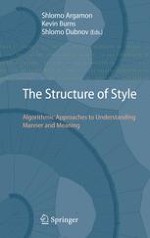2010 | OriginalPaper | Buchkapitel
8. Let’s Look at Style: Visual and Spatial Representation and Reasoning in Design
verfasst von : Julie Jupp, John Gero
Erschienen in: The Structure of Style
Verlag: Springer Berlin Heidelberg
Aktivieren Sie unsere intelligente Suche, um passende Fachinhalte oder Patente zu finden.
Wählen Sie Textabschnitte aus um mit Künstlicher Intelligenz passenden Patente zu finden. powered by
Markieren Sie Textabschnitte, um KI-gestützt weitere passende Inhalte zu finden. powered by
